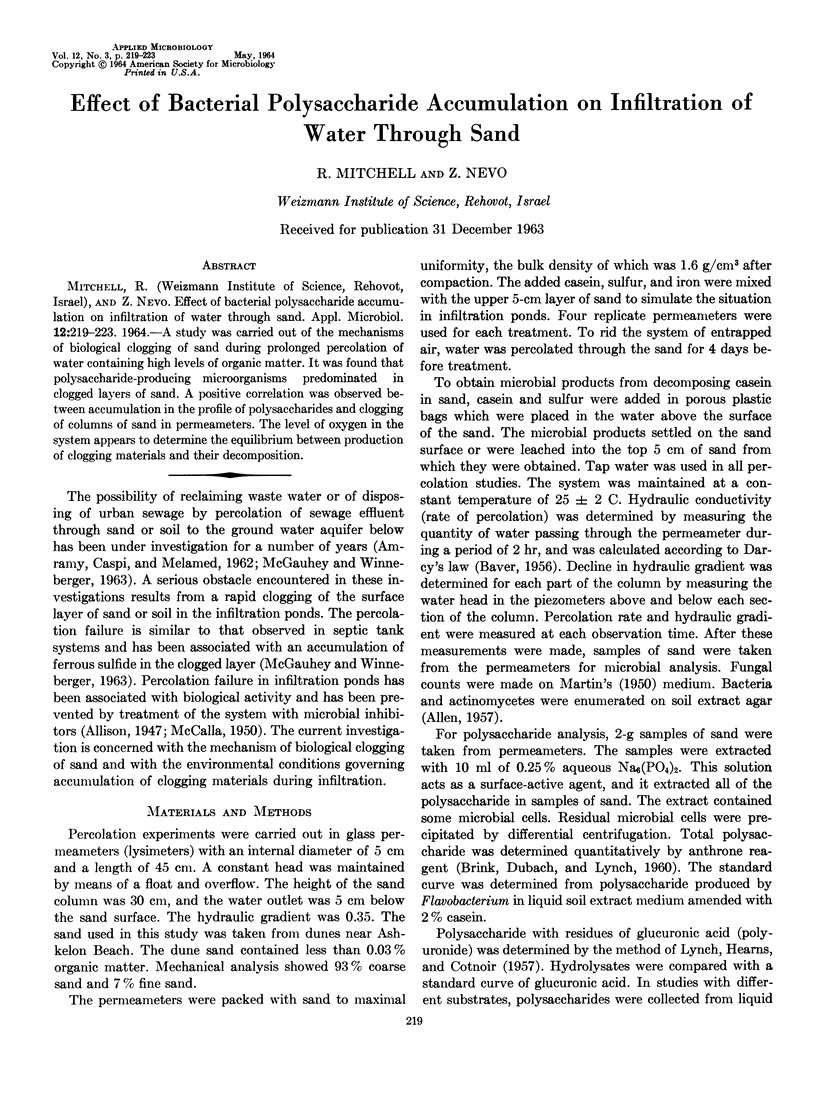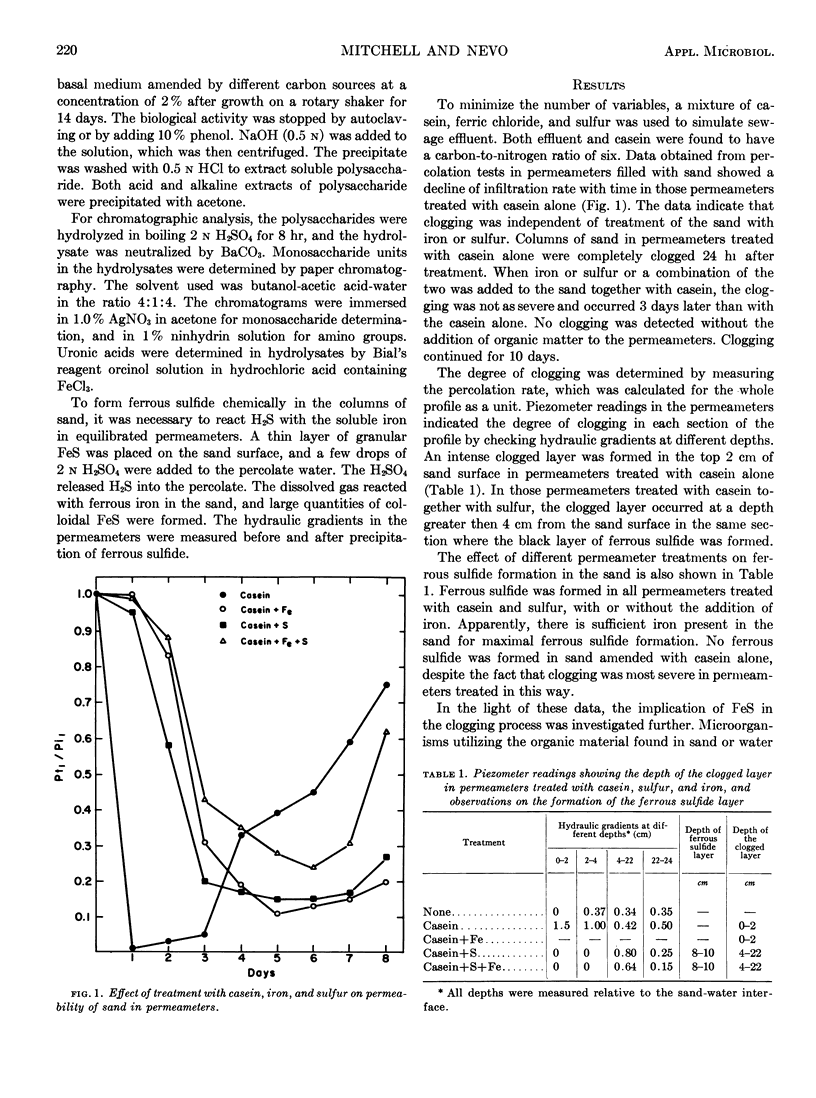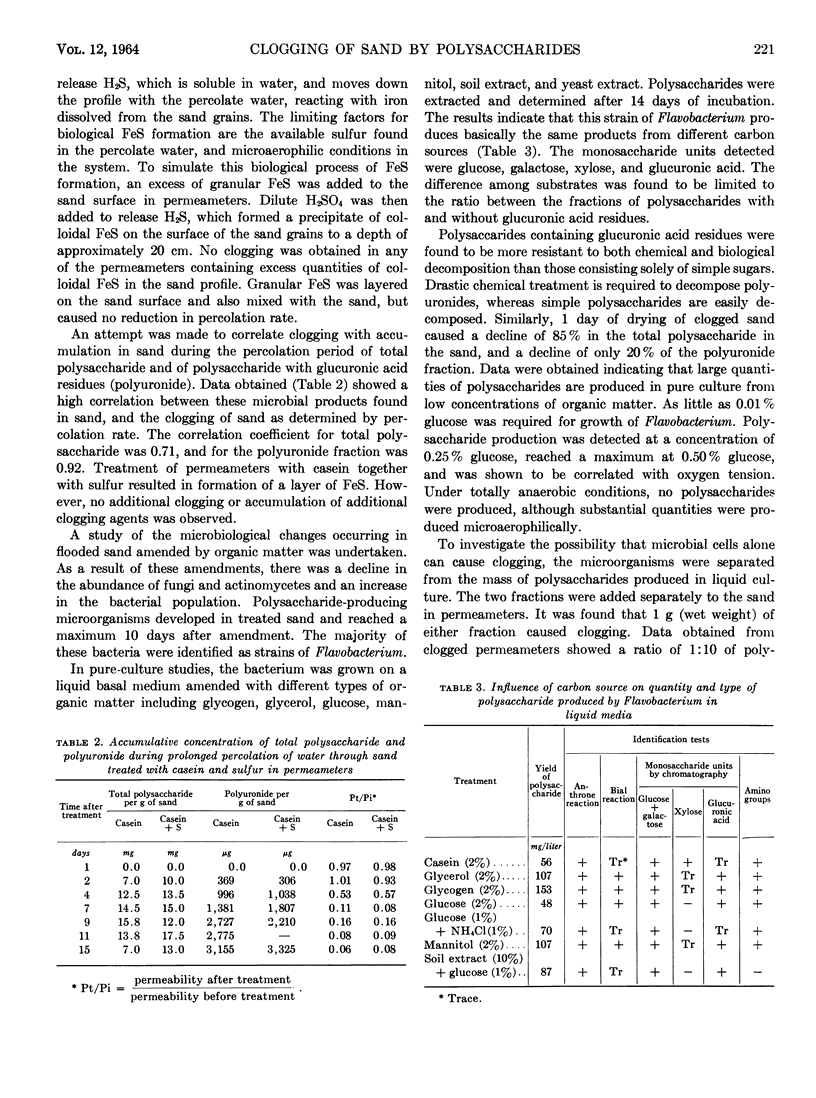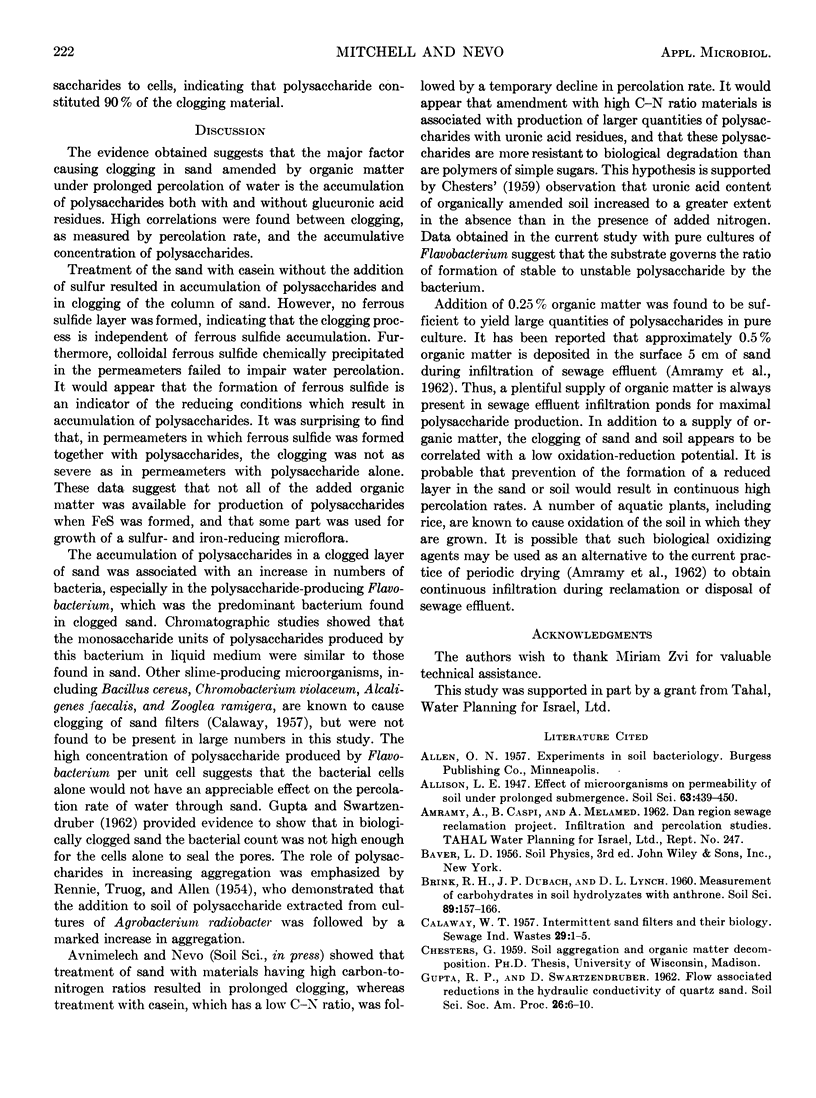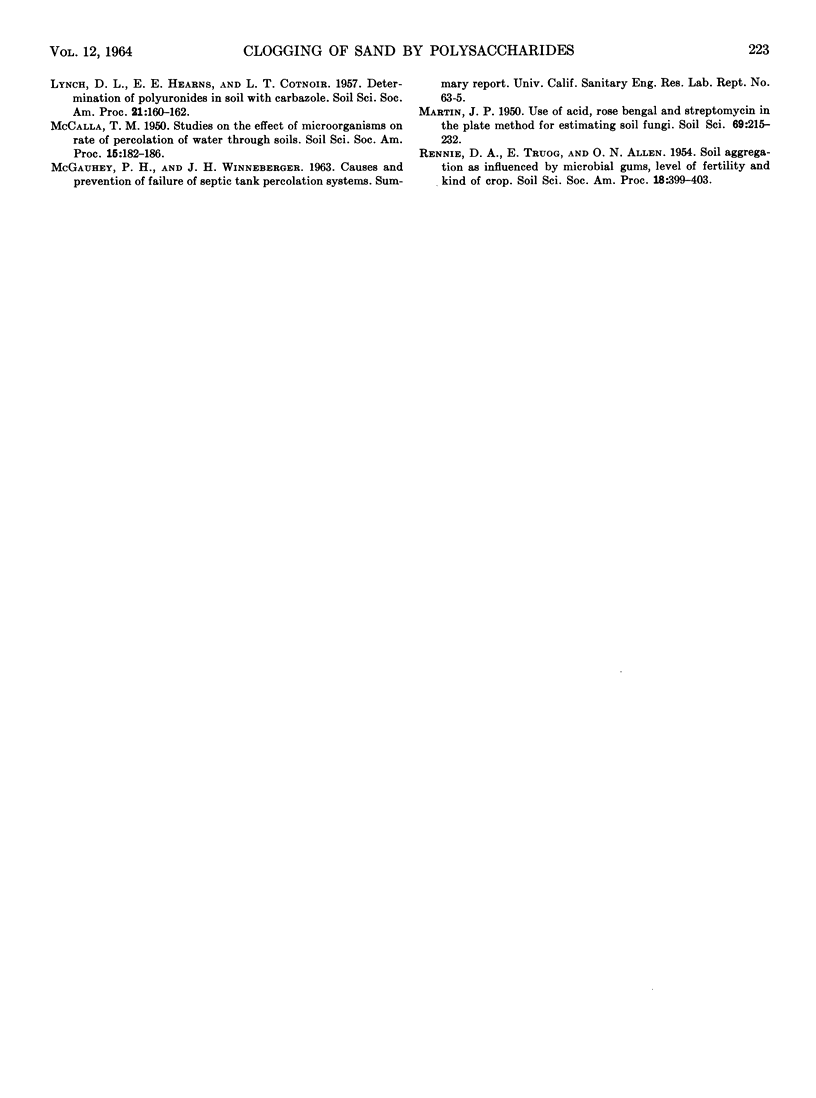Abstract
A study was carried out of the mechanisms of biological clogging of sand during prolonged percolation of water containing high levels of organic matter. It was found that polysaccharide-producing microorganisms predominated in clogged layers of sand. A positive correlation was observed between accumulation in the profile of polysaccharides and clogging of columns of sand in permeameters. The level of oxygen in the system appears to determine the equilibrium between production of clogging materials and their decomposition.
Full text
PDF